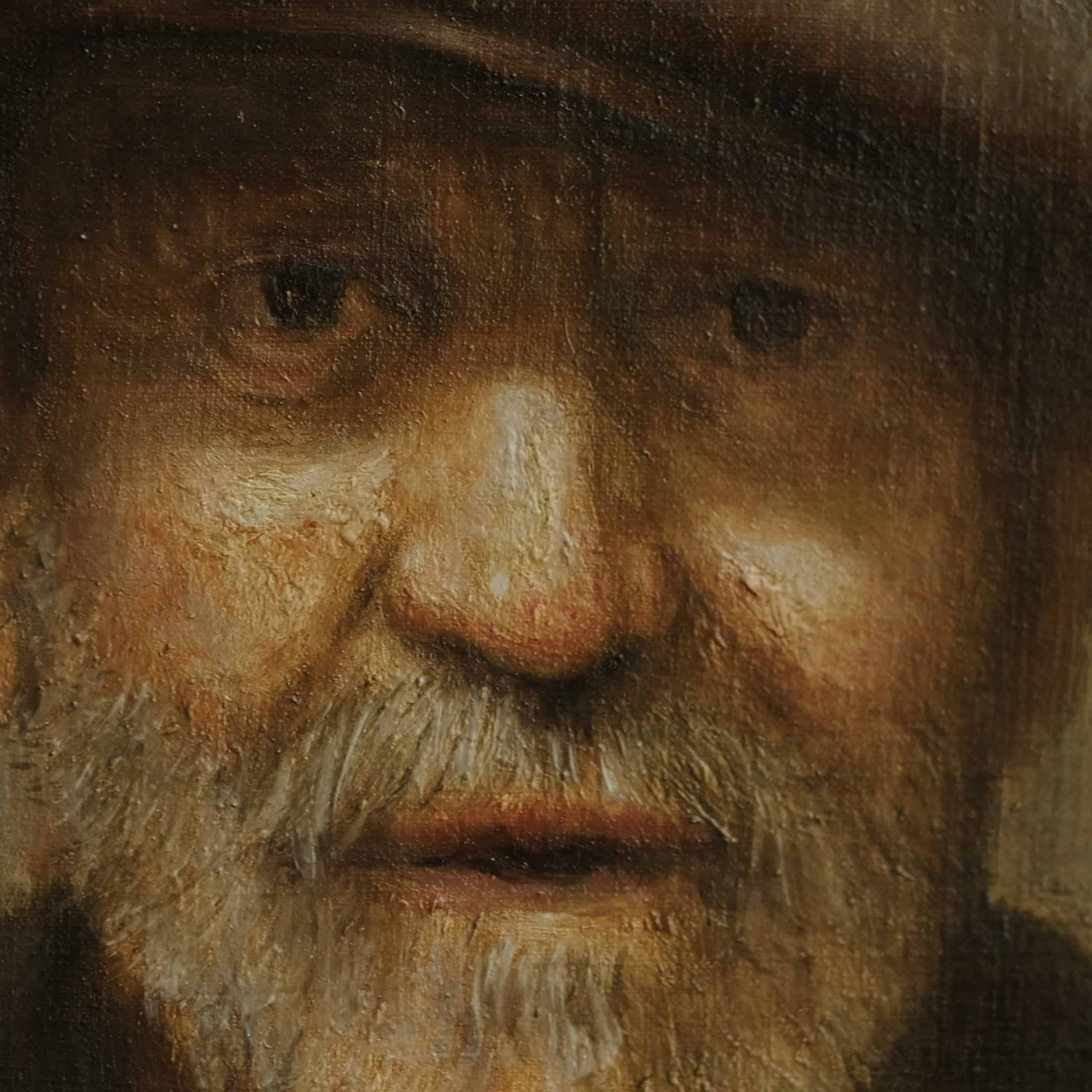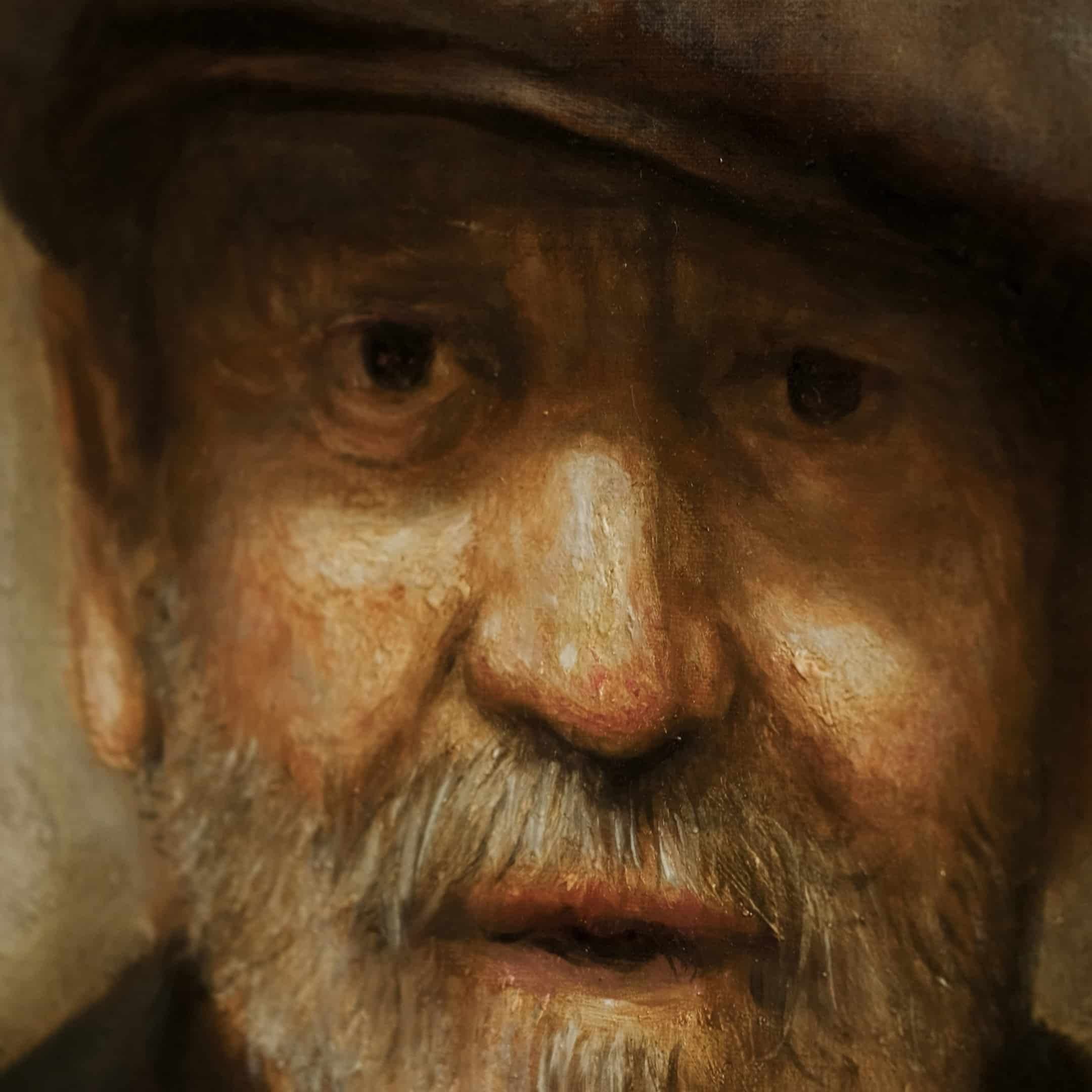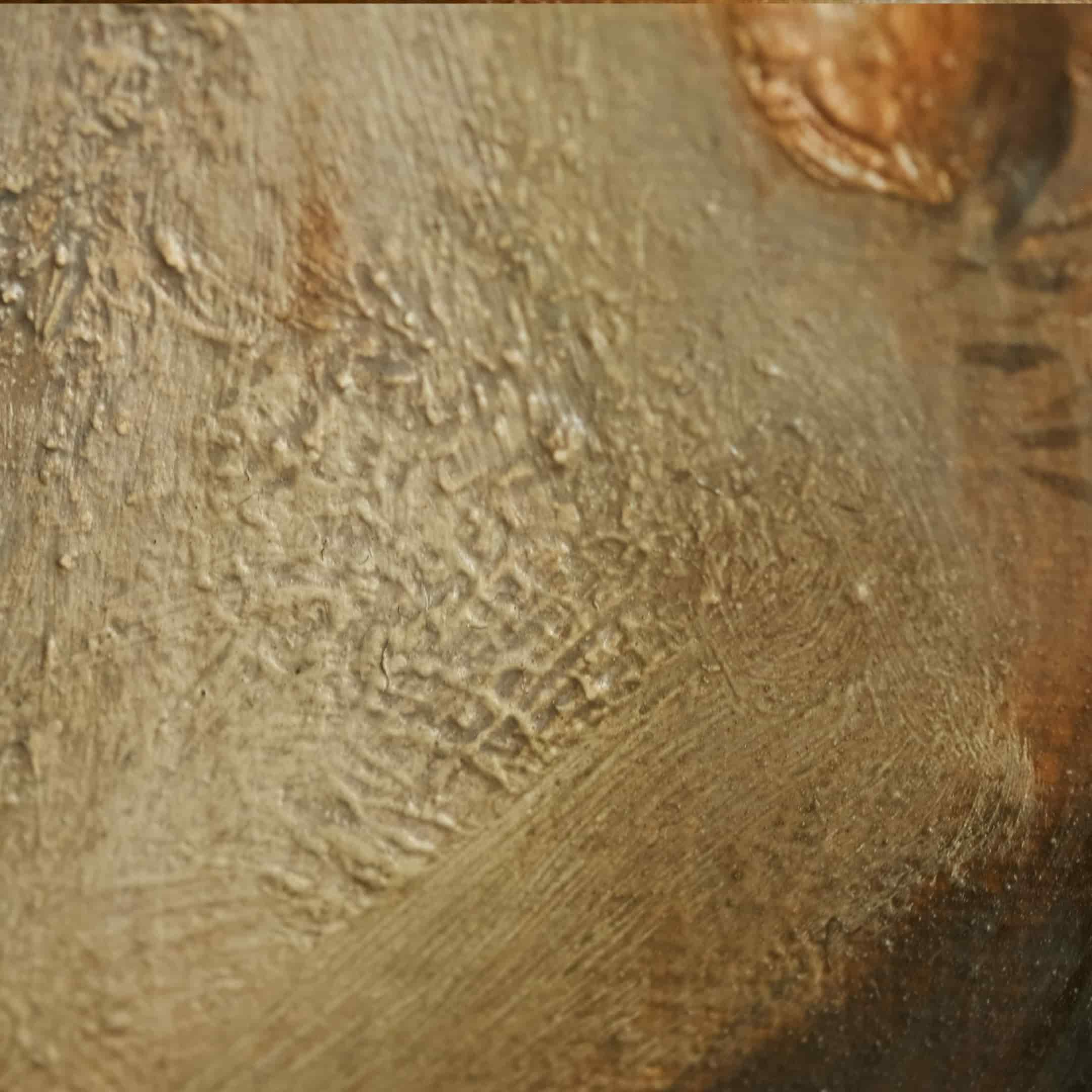Study of a Man in Shadow
Oil on Paper, executed with old master techniques
This portrait is a focused study of light, form, and character, rendered in oil on paper using historically grounded techniques. The work captures the face of an elderly man, weathered yet dignified, his expression caught between silence and speech — a fleeting psychological state made permanent through the language of oil paint and light.

“Study of a Man in Shadow” Oil on Paper, executed with old master techniques
Executed using the indirect method of the old masters, the artist first established the structure in grisaille, using a monochromatic palette of lead white and bone black to sculpt the forms before any color was introduced. This approach allows the volumetric qualities of the face to emerge from within, guided by the subtle modulation of values rather than surface color alone.
The support — a hand-prepared heavyweight paper, toned with a warm earth ground — mimics the absorbent but smooth character of traditional panels. The flexibility of paper allows for a more spontaneous engagement with the subject, yet the painting retains the layered discipline of classical technique.

Pigments and Materials:
The pigments were chosen not for convenience but for their optical and structural fidelity to historical precedent:
-
Lead White (Flake White) – Used extensively in the underpainting and highlights, this pigment offers unmatched warmth, workability, and subtle opacity. It was central to all modeling of flesh and beard, where it was often blended with earth tones for controlled gradation.
-
Raw Umber and Burnt Umber – These earth pigments were used to shape the cooler and warmer shadows respectively, providing both transparency and permanence. They play a crucial role in defining the sitter’s bone structure and the leathery quality of his skin.
-
Red Ochre and Vermilion – Sparingly used in the midtones of the cheeks and lips, these pigments introduce warmth and human presence without overwhelming the form. Vermilion’s high chroma is subdued through blending and glazing to maintain harmony.
-
Bone Black – Used both in underpainting and final glazing, especially in the shadows cast by the hat and under the cheekbones. Its neutral tone and soft transparency help define mass without flattening the dimensional effect.
Each pigment was bound in cold-pressed linseed oil, hand-mulled to achieve an ideal consistency for layering and transparency. The oil medium was adjusted with natural balsams for glazing, offering a slight enamel effect without artificial sheen.

Focus on Light and Form:
The painting is as much a study of chiaroscuro as it is a psychological portrait. The interplay of diffuse natural light and enveloping shadow is handled with a delicate eye for gradation — the forehead and cheek catching a soft illumination, while the under-eye, hat, and jaw retreat into obscurity. The effect is not theatrical but contemplative, recalling the interior quiet of Rembrandt's later works.
The facial expression, subtly open-mouthed, evokes a moment of vulnerability and realism rarely seen in idealized portraiture. The use of impasto in key highlights contrasts with the glazed shadows, enriching the surface with material variation.
A final touch of dammar varnish — aged and filtered — was applied to unify gloss and protect the surface, lending the painting a gentle, timeworn luster.




